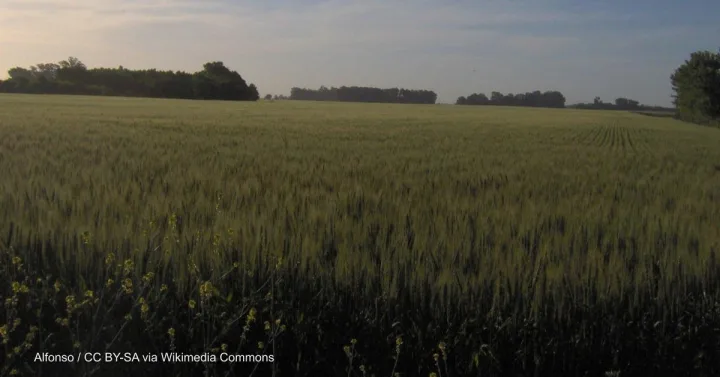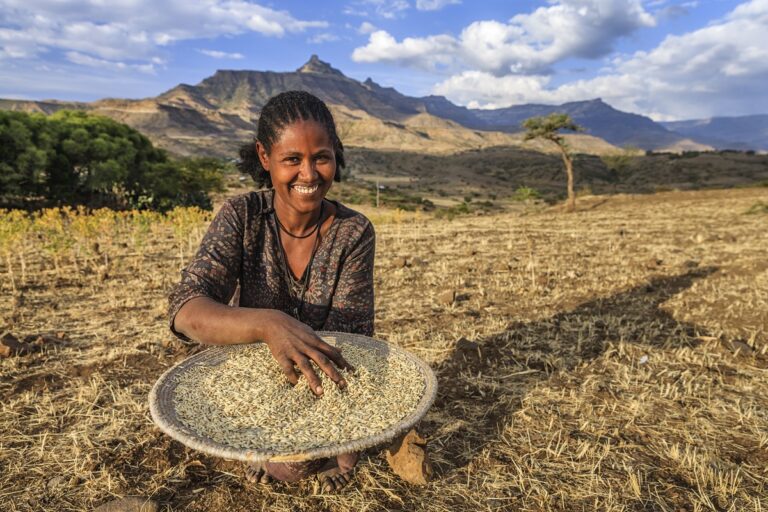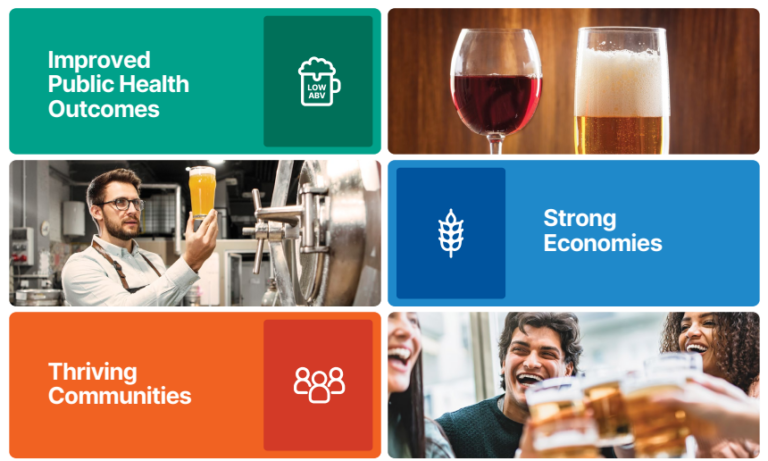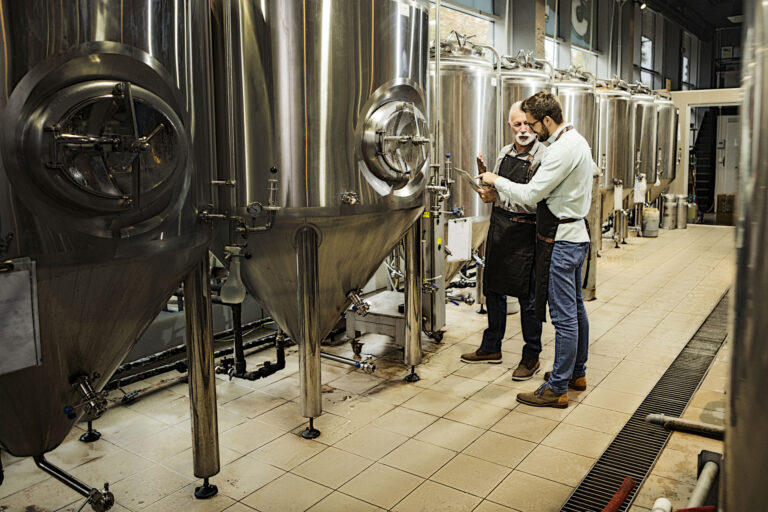Re-posted from Devex
Amid Argentina’s ongoing economic crisis, barley production, a major supplier to the beer industry, has become a lifeline for farmers. Alejandro Vejrup discusses how this versatile crop supports livelihoods, fuels local industry, and opens doors to global markets in Tres Arroyos.
Despite being the world’s third largest food exporter, Argentina has seen soaring inflation push millions of citizens into poverty. The country’s annual inflation peaked near 300% in April 2024, easing to around 166% in November. Respectively, poverty has surged to over 50% — the highest it’s been in two decades.
One place for optimism is in the country’s agricultural sector, which is a key provider of livelihoods and jobs. The sector accounted for 15.7% of gross domestic product and 10.6% of tax revenues in 2021, making it an important puzzle piece for boosting its economic recovery. One of Argentina’s most important agricultural products is barley, the cereal grain most often used in brewing beer and malt production. According to a new report released by Oxford Economics and the World Brewing Alliance, in 2023, the beer sector alone supported 120,000 jobs in Argentina. Additionally, through the agriculture sector, beer contributed $721 million to the GDP of Argentina. According to Oxford Economics, across agriculture and other sectors, 89% of brewers’ supplier spending was with businesses local to Argentina for beer brewed in the country.
How could this fast-growing sector help Argentina’s farmers cope with the economic crisis and open doors to new revenue streams and markets?
Devex spoke to Alejandro Vejrup, agricultural producer and manager of Cooperativa Alfa in Tres Arroyos, a city south of the capital Buenos Aires, about the role of barley production in the area and how it has allowed producers such as himself to grow their business during an economically tumultuous time.
The following conversation has been edited for length and clarity.
For how long has barley been a core part of your family business, and what are the advantages of barley production for farmers?
My grandfather emigrated from Denmark and settled in Tres Arroyos in 1930, and my father is also an agricultural producer. In the beginning, they didn’t grow barley but had fields of flax, sunflower, and wheat. But some 40 years ago, my father started planting barley, so we have a long history of growing it as part of the family business, and we’ve been doing it for as long as I can remember.
It’s a very reliable crop for this area. We enjoy growing it a lot as it tends to give good yields and sometimes even outperforms wheat, giving us a certain advantage as it uses very similar inputs and fertilizers to those used for wheat farming. It also has the advantage of being harvested a week to 10 days earlier than wheat, which gives you the opportunity to grow an additional secondary crop, such as soybeans, corn, or sunflowers. Because it’s ready to harvest earlier, the barley consumes less input and soil moisture compared to the wheat, so if the weather conditions are good, you can sow a second crop.
Can you tell us more about the importance of barley production in Tres Arroyos?
When AB InBev set up Cervecería y Maltería Quilmes — a very large brewery — here in Tres Arroyos some 30 years ago, it created a push in the demand for barley. One of the benefits for us producers is that instead of having to take our barley to the port, which is about 140 kilometers away, we can bring it directly to the brewery here in Tres Arroyos. One of the advantages of having a local industry is lower transportation costs.
With the establishment of Maltería Quilmes, the area planted with barley has increased. In recent years, the demand from China for feed barley — often used to feed livestock — has also grown significantly. As a result, many producers who previously didn’t grow barley started saying, “I’ll grow barley because if it turns out to be brewing quality, I’ll sell it to Quilmes or the [brewing] industry. If it turns out to be of poor quality — whether due to low protein or other issues — companies from China will buy it for feed.”
It has also helped address another big issue facing farmers in Argentina, which is the restrictions on wheat exports. At times, the government has shut down wheat exports, but not barley exports, as it doesn’t affect domestic consumption as much. Whenever they did this, wheat prices would drop, but barley prices would remain good. This also led many producers to change their crop rotations and to start planting more barley.
Today, the municipality of Tres Arroyos produces approximately 1.5 million tons of grain each year — and 30% of that is barley [this information comes from the productive sector of the mayor’s office at Tres Arroyos]. So it’s significant in terms of our grain production and Cooperativa Alfa sources about 10%-15% of the barley from Tres Arroyos.
The beer industry contributed $721 million to Argentina’s GDP in 2023 through the agriculture industry ($6.4 billion to Argentina’s GDP in total). What does it mean for farmers such as yourself?
In this region, barley is an important option because of the brewery. If it weren’t here, we would have to rely much more on exports. The good thing about having a local brewing industry is that producers have three options: on the one hand, you can sell malting barley to the local industry, if it doesn’t meet the quality you can sell it as fodder, and if the industry doesn’t pay the price you want, you can sell it as malting barley and export it through the ports. So you have an interesting level of competition that encourages producers to plant barley because of the access to different markets. If Quilmes decided to build another plant here I’m sure producers would plant even more barley because it’s a crop that’s appreciated.
Can you tell us more about the work of Cooperativa Alfa and how it supports barley producers in Tres Arroyos?
The average farmer in our cooperative has about 500 hectares, which doesn’t allow you to hire any administrative staff because the fixed costs would consume most of your benefits. This means they often run around doing many things at once, including administration and finances. So one of our main tasks is to provide farmers with logistical service during the harvest. For example, we send our trucks to pick up the grain directly from the farmers.
We have an agreement with Quilmes that the barley is received at the cooperative’s silo plant by personnel from Maltería Quilmes. Therefore, the producer only has to pay the transportation costs to our collection plant, which saves them money. They also have guaranteed and agile logistics during harvest. As a cooperative, we also assist producers with supplies, marketing, freight, and financing, for example, if they need to buy inputs such as fertilizer. Ultimately, what we do as a cooperative is to provide a service to our members.
It is estimated that the beer sector supports over 120,000 jobs in Argentina, including 13,000 agriculture jobs. How is the beer sector helping to create jobs in the region?
Given that about 30% of the grain production in Tres Arroyos municipality is barley, it has a significant impact on commerce, on freight, on transport, and on employees working in silo plants. There’s a very high percentage of the economy that moves around the production, including everything from the fertilizers that are transported to the fields, the seeds, and the agronomists who visit the producers who are planting, to intermediaries like cooperatives, collection centers, suppliers of inputs, and transporters. It’s truly a complex and interesting sector.
For further country-by-country detail and sectoral breakdown of how the beer industry supports economies around the world, WBA and Oxford Economics have launched an interactive microsite. Here, users can explore the data at both global and individual country level and across a number of years, along with the ability to separate out the brewers and downstream value chain from the beer sector as a whole and, within that, to explore the breakdown between the direct, wage induced, and supply chain impacts.











